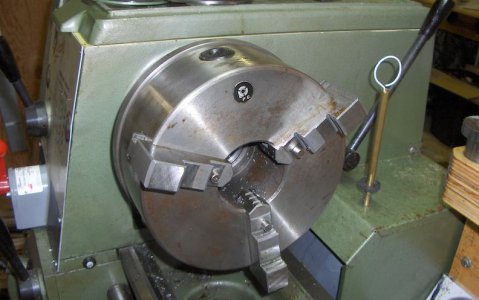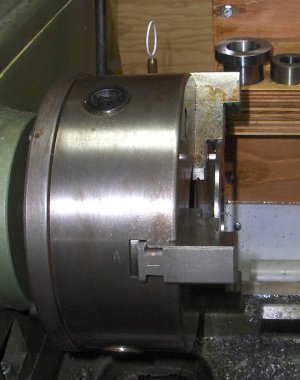One of those "aha" moments that might benefit someone else down the line:
I'm having to drill and tap about eighty (80) blind holes #2-56 partway through some 3/8" brass rod for a project at work. All of my tap handles, even the smallest, felt too heavy and bulky -- I was scared of breaking the little tap from the weight of the handle alone. So after a bit of head scratching I came up with this. I have three full sets of clock winding keys (previous life/previous hobby) at home and darned if one of them (coincidentally a #2 american key) didn't fit the square on the tap just perfectly. Very light, easy to slip on and off, but still a good solid feel for two-finger operation. Works like a dream, and one of those ideas I thought just had to be shared.
-frank
That is a great idea for those small taps. Looks like it has just enough feel to it as not to over stress and break the tap. Thank you for sharing



